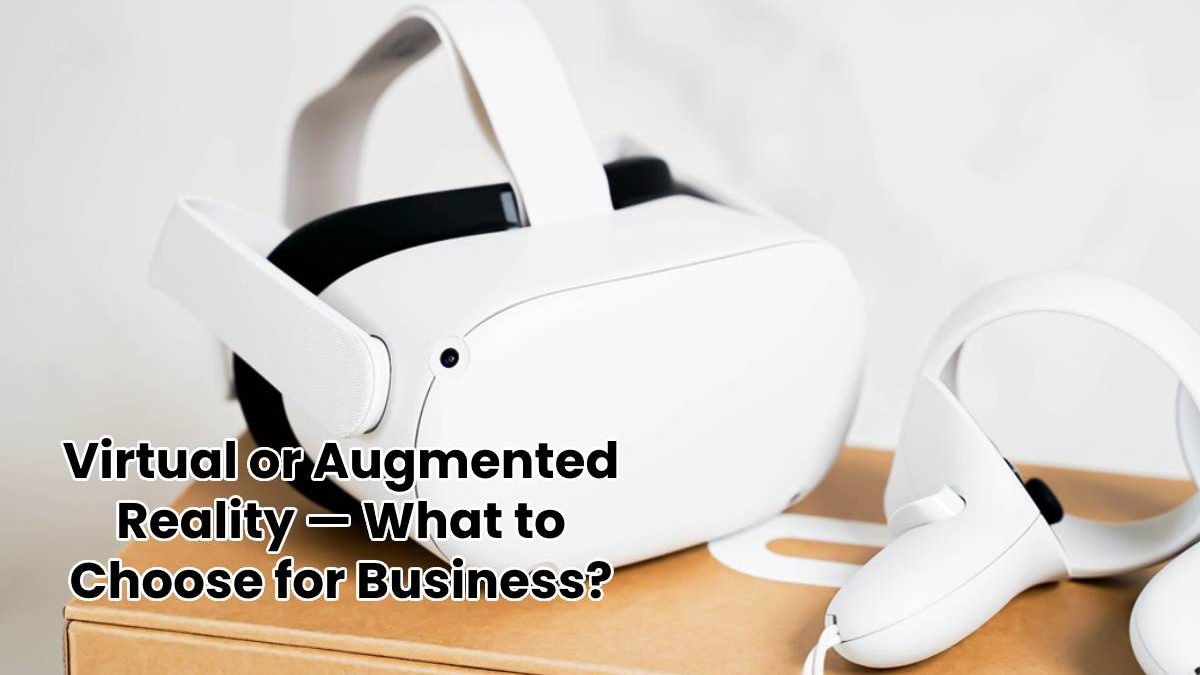Augmented and virtual reality technologies continue pushing the IT industry’s limits, bringing closer the new Web 3.0 internet iteration. Immersive solutions are becoming so widespread that they are being utilized in education, business, entertainment, healthcare, and the like. In light of the shifts and innovations, enterprises are eager to try out all the novelties.
What is the difference between virtual and augmented reality? What do immersive technologies encompass? How can your business leverage the advent of this new paradigm? This article will familiarize you with the answers to these and other related questions.
What Is Virtual and Augmented Reality?
To start with, virtual reality (VR) provides an immersive user experience through respective devices like a headset, controllers, etc. In turn, augmented reality (AR) is a technology that complements a live view of a, say, smartphone or camera with computer graphics. For example, Instagram or Snapchat lenses or the Pokemon Go game fall into the category of AR solutions in the software development world.
A good illustration of how virtual reality functions in conjunction with metaverse technology is a DeFi VR world developed by Program-Ace for a client. In this relation, there’s no denying that a wide range of immersive technologies’ applicability allows businesses to take full advantage of their potential and build stunning apps in the domains of healthcare, manufacturing, education, etc.
The Business Value of XR Technology
As mentioned above, you can make use of either virtual or augmented reality in a plethora of industries to improve business performance. Let’s talk about these niches in more detail to shed light on how you can benefit from entering the world of immersion.
- Manufacturing. This industry is one of the most suitable for applying VR and AR technologies as they provide more prospects for training or prototyping as well as enhance quality assurance.
- Retail. Given the aim of e-commerce players to attract more potential customers to their particular product, AR technology allows developing software to ensure an immersive shopping experience as purchasers are able to interact with a virtual copy of an item, thereby increasing the odds of buying.
- Gaming. In particular, this industry is the first to benefit from AR and VR applications thanks to the XR technology’s potential to expand the player experience, let alone maximize the sense of immersion.
Aside from the industries where augmented and virtual realities are frequently used, it’s also necessary to consider their most persuasive advantages.
- Onboarding. One of the most straightforward applications of either virtual or augmented reality is that you can build an XR app that helps train employees, thereby significantly accelerating their onboarding or facilitating continuous e-learning.
- More market coverage. Statista indicates that the AR, VR, and MR (mixed reality) market is forecast to hit $300bn by 2024. This number proves that by referring to XR technology and broadening the scope of your services or improving the product with it, you significantly increase the global market coverage, inasmuch as more audiences are becoming regular VR/AR/MR users.
- Strategic prototyping. With the help of virtual or augmented reality prototypes, you can visualize and foresee the functionality of your future product, thereby considerably decreasing the risks of failure due to a more immersive experience for testers.
What XR Technology to Go with In Your Case?
You’ll require a different approach depending on your business strategy, team, project scope, and target audience. If your company operates in one of the industries mentioned above, including healthcare, manufacturing, e-commerce, or entertainment, you should opt for VR in onboarding and AR as a feature for your product.
Another choice you have to make involves the approach to development. You can do everything using an in-house team or address an augmented reality app development company to either extend your workforce or outsource the entire project. In any event, you’ll end up with a functional and quality VR or AR product based on market research.

